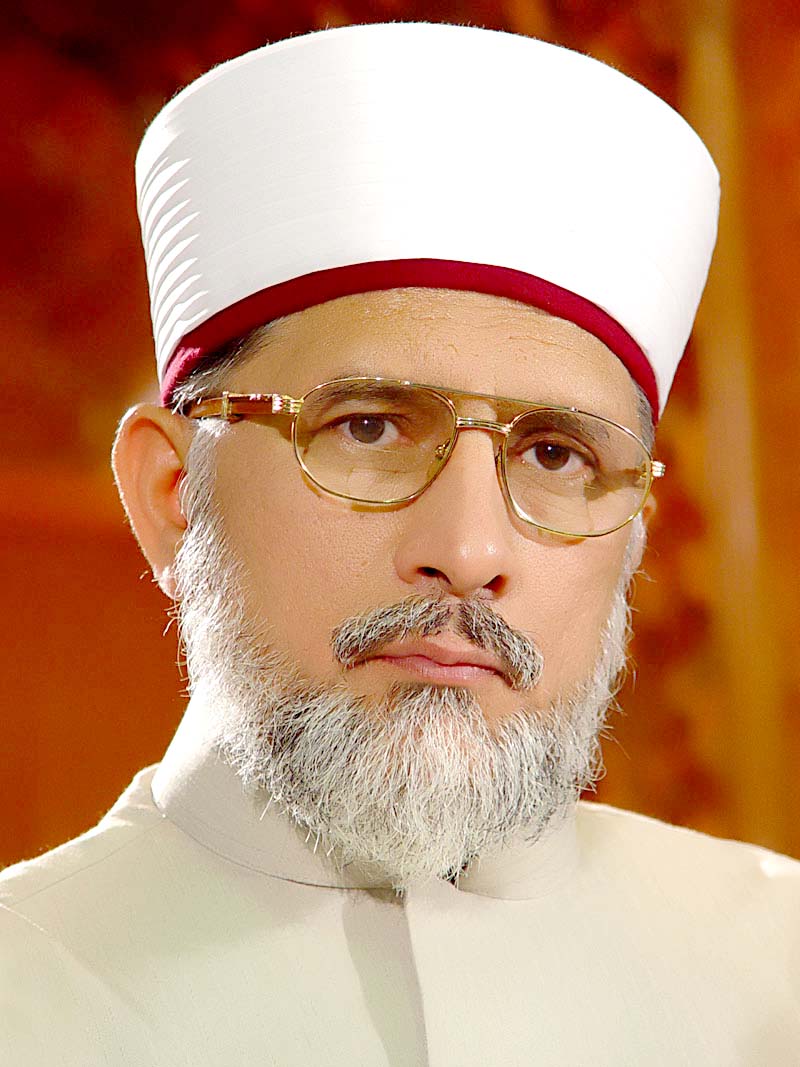Muhammad Tahir-ul-Qadri
(Urdu: محمد طاہر القادری; born 19 February 1951) is a Pakistani–Canadian Islamic scholar and former politician who founded Minhaj-ul-Quran International and Pakistan Awami Tehreek. He was also a professor of international constitutional law at the University of the Punjab. Qadri is also the founding chairman of various sub- organisations of Minhaj-ul-Quran International. He has authored 1000 works, out of which 550 are published books, including an "eight-volume, 7,000-page Qur’anic Encyclopedia in English covering all 6,000-plus verses of the Koran." He has delivered over 6000 lectures and has been teaching subjects such as Islamic jurisprudence, theology, Sufism, Islamic philosophy, law, Islamic politics, hadith, Seerah, and many other traditional sciences. more information about A Profile of Shaykh-ul-Islam Dr Muhammad Tahir-ul-Qadri

THE RUBAIYAT OF OMAR KHAYYAM
“The Rubáiyát of Omar Khayyám” is a long lyric poem in quatrains (four-line stanzas) of iambic pentameter, with a rhyme scheme of AABA. Translated by Edward Fitzgerald from a manuscript of Persian verse attributed to Omar Khayyam, a 12th-century Persian mathematician and philosopher, “The Rubaiyat” contains pithy observations on complex subjects such as love, death, and the existence of God and an afterlife.
When “The Rubaiyat” was first published in March 1859, it received little attention. Fitzgerald, a friend of Victorian poets like Alfred Tennyson (1809-1902), was considered only a minor literary figure at the time. However, poet Dante Gabriel Rossetti (1828-1882) discovered the poem in 1860 and played a significant role in popularizing it. From thereon, “The Rubaiyat” had a meteoric rise in popularity, becoming one of the most-quoted poems in English by the early 20th century. It is useful to consider Fitzgerald’s “The Rubaiyat” partly as a work of English literature, since his translation is extremely free and creative. Some critics consider “The Rubaiyat” as a standalone poem inspired by the original Persian verse, rather than a transcreation. Fitzgerald revised “The Rubaiyat” four times after its first publication, so that there exist five published editions of the poem. This study guide uses the first edition. Many of the changes Fitzgerald introduced in subsequent editions are quite significant, as can be seen in this comparison of two versions of Verse 1:
First edition
Awake! for Morning in the Bowl of Night
Has flung the Stone that puts the Stars to Flight:
And Lo! the Hunter of the East has caught
The Sultan’s Turret in a Noose of Light.
Fifth edition
WAKE! For the Sun, who scatter’d into flight
The Stars before him from the Field of Night,
Drives Night along with them from Heav’n, and strikes
The Sultan’s Turret with a Shaft of Light.
Poet Biography
Omar Khayyam (full Arabic name Ghiyāth al-Dīn Abū al-Fatḥ ʿUmar ibn Ibrāhīm al-Nīsābūrī al-Khayyāmī; 1048-1131 AD) was a renaissance man long before the dawn of the European renaissance: an expert in subjects as diverse as mathematics, law, and philosophy. Khayyam (the family name literally meaning “tent-maker”) was born in Naishapur, in northeastern Persia, around the time when the Seljuk Turk (a central Asian tribe) dynasty began to rule the region. When he was 20, Khayyam moved to the great city of Samarkand, now in Uzbekistan, for work and further scholarship. It is in Samarkand that he wrote some of his greatest treatises on algebra.
Prodigiously intelligent and reserved in temperament, Khayyam was an agnostic who chafed under the orthodox religious state the Seljuk Turks were beginning to impose in Persia. However, Khayyam did enjoy court patronage from time to time, which enabled him to finish many significant works. Among his other scientific achievements, Khayyam discovered a geometrical method of solving cubic equations by intersecting a parabola with a circle, and helped design the Jalali calendar, a very advanced solar calendar, a modified version of which is still in use in Iran. Khayyam is believed to have married and had children; beyond this, not much is known of his personal life.
Though Khayyam was famous for his erudition in his day, very little was known about his poetry. Some scholars speculate that he did not dare to make his poetry public at the time, since it contained heretical (dissenting from established religious belief) themes. However, these claims are unproven. Verses under Khayyam’s name began to appear in the oral tradition only much after his death. In the coming centuries, there grew a tradition of attributing verses to Khayyam, especially those that tackled nihilistic philosophy, a rejection of the afterlife, and an emphasis on living in the moment. It is unclear if the historical Omar Khayyam wrote all or most of these verses, or if they were even written by any one single poet.
Edward Fitzgerald (1809-1883) was an English writer and poet. A member of what grew to be one of England’s most wealthy families of the time, Fitzgerald was educated at Cambridge university. Single for most of his life, Fitzgerald married Lucy Barton, daughter of the Quaker poet Bernard Barton, in 1856. However, the couple separated a few months after the wedding.
https://www.supersummary.com/the-rubaiyat-of-omar-khayyam/summary/
